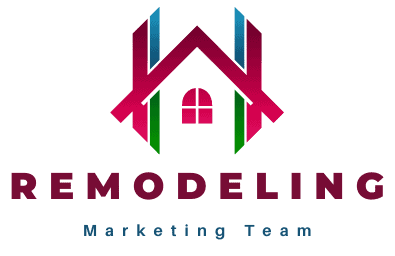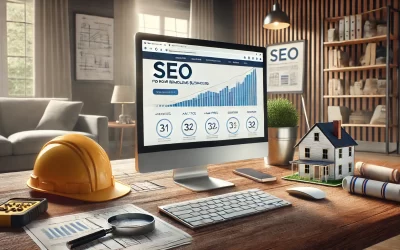Today, social media is a key tool for home improvement companies looking to grow. With the right strategy, you can increase your brand’s visibility, build customer trust, and get more leads. Here, we’ll share some simple, effective social media strategies that can help your home improvement business stand out.
Key Takeaways
- Understand Your Audience: Identify who your customers are, what they need, and which social platforms they use. Tailor your content to speak directly to them.
- Choose the Right Platforms: Use platforms that best match your audience and goals. Facebook, LinkedIn, and YouTube are top choices for home improvement companies.
- Develop a Content Strategy: Plan and create engaging content such as customer testimonials, before-and-after photos, and videos to keep your audience interested. Use analytics to find the best times to post.
- Share Educational Content: Post tips and insights on home improvement topics to build trust and establish your company as an industry expert.
- Use Paid Ads and Retargeting: Target specific groups with paid ads and use retargeting to bring back visitors who didn’t take action initially.
- Leverage Customer Reviews: Showcase positive reviews and encourage clients to tag your business on social media. This user-generated content can expand your reach and build credibility.
- Measure Success: Track follower growth, click-through rates, engagement, and conversions to understand what’s working. Use this data to adjust your strategy as needed.
- Stay Consistent: Regular posting and quick responses to comments build a reliable, active online presence that attracts new customers.
1. Get to Know Your Audience
The first step to a successfulsocial media strategy is understanding your audience. This means figuring out who your ideal customers are and what they care about. Are they homeowners? Do they like modern design? Do they need help with specific projects? Once you know who they are, you can create content that really speaks to them.
Use data from past clients to build profiles of your ideal customers. Then, choose the social media platforms where these people spend time. Facebook, Instagram, Pinterest, and LinkedIn are great choices for most home improvement businesses.
2. Choose the Right Platforms for Your Business
Each social media platform has its strengths, so it’s important to choose the ones that work best for your goals:
- Facebook: Build a community and use ads to reach new customers. You can also join groups where people discuss home improvement.
- LinkedIn: This is a great place to connect with other professionals, show off your skills, and build trust in the industry.
- YouTube: Post videos, such as “how-to” guides and project showcases, to show your expertise and help potential customers.
3. Create a Content Strategy to Engage and Attract Leads
To engage your audience, you need a strong content strategy. This includes planning what to post, when to post it, and how to make your posts stand out.
- Types of Content: Share customer reviews, helpful tips, before-and-after project photos, and videos.
- Timing: Check analytics to find the best times to post, then schedule your posts to reach more people.
- Hashtags: Use relevant hashtags to make your posts easier to find. Think of keywords your audience might use, like #HomeImprovement or #Remodeling.
4. Build Trust with Educational Content
When you share helpful content, people begin to trust you. Talk about popular home improvement topics, like design trends, tips for choosing materials, or budgeting ideas. Add images, infographics, and short videos to make your content more engaging and easy to understand.
5. Try Paid Ads to Reach More People
Social media platforms like Facebook and Instagram offer paid ads that let you target specific groups. For example, you can choose to show ads only to people interested in remodeling or design.
Retargeting ads are also helpful. These ads target people who visited your website but didn’t take action, encouraging them to come back to learn more about your services.
6. Share Customer Reviews and Testimonials
Many people read reviews before deciding on a home improvement company. Use your positive reviews in social media posts to build trust with new customers. Encourage happy clients to tag your business in their posts. This kind of “user-generated content” can help you reach more people and make your brand look more credible.
7. Track Your Success and Make Adjustments
To see if your social media strategy is working, track your results regularly. Here are a few metrics to watch:
- Follower Growth
- Click-Through Rates (how often people click on your links)
- Engagement Rates (likes, comments, and shares)
- Conversions (how often people contact you or request a quote)
Use these insights to adjust your strategy. A/B testing can also help you figure out what types of content and ads work best with your audience.
8. Keep Your Social Media Active and Engaging
Being active and consistent on social media is essential. Use scheduling tools to post regularly and respond quickly to comments and messages. This shows your audience that you care about their questions and feedback.
Conclusion
A smart social media strategy can help your home improvement business reach more people, gain trust, and attract new clients. By getting to know your audience, picking the right platforms, and sharing helpful content, you can turn social media into a powerful tool for your business.
Ready to grow your business?Schedule a strategy session with Remodeling Marketing Team today. We’ll help you create a social media plan that fits your goals and connects with your ideal customers. Click here to book your session and take your business to the next level!
FAQs
Why should home improvement companies use social media for marketing?
Social media is a powerful way to increase brand visibility, connect with potential clients, and generate leads. It allows home improvement companies to showcase their work, engage directly with their audience, and build trust through valuable content.
Which social media platforms are best for home improvement companies?
Facebook, Instagram, LinkedIn, and YouTube are ideal for home improvement companies. Facebook and Instagram are excellent for engaging customers with photos, videos, and updates, while LinkedIn is valuable for networking with other professionals. YouTube is great for posting how-to videos and project showcases.
What type of content should we post to attract more leads?
Share a mix of content, including before-and-after photos, client testimonials, educational posts, project walkthroughs, and tips. Educational content that addresses common questions or showcases your expertise is especially effective for building trust.
How can paid advertising help our social media strategy?
Paid ads on platforms like Facebook and Instagram allow you to target specific demographics and interests, reaching a more focused audience. Retargeting ads are also useful, as they bring back people who visited your website but didn’t take further action, encouraging them to reconnect with your business.
How often should we post on social media?
Consistency is key. Aim to post regularly—at least a few times a week—and use scheduling tools to stay organized. Consistent posting helps build a reliable online presence and keeps your audience engaged.
How do we track if our social media strategy is working?
Use metrics like follower growth, click-through rates, engagement rates (likes, comments, shares), and conversions to measure success. Social media platforms offer analytics tools to track these metrics, helping you refine your approach.
What are the benefits of customer reviews and testimonials on social media?
Positive reviews and testimonials build credibility and make potential clients more comfortable choosing your business. Encourage satisfied customers to share their experiences and tag your business on social media to increase brand visibility.
Can Remodeling Marketing Team help create a social media strategy for our company?
Yes! Remodeling Marketing Team offers strategy sessions to help develop a social media plan that aligns with your business goals. We’ll assess your current efforts, suggest improvements, and help you connect with your ideal audience.
This article is a collaboration between Carl Willis and OpenAI’s ChatGPT. Created on November 4, 2024, it combines AI-generated draft material with Willis’s expert revision and oversight, ensuring accuracy and relevance while addressing any AI limitations.






